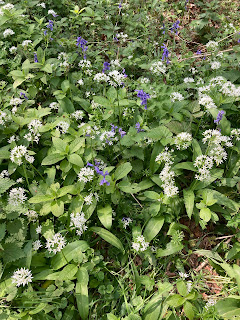Crocus
A fresh purple and white-striped crocus flower.
One of the first signs of spring is the emergence of spring-flowering crocus. Crocus is both the Genus and common name, and consists of around 90 known species, of which the UK has 3 'wild' species: Crocus vernus (Spring crocus), Crocus tommasinianus (Early crocus), and Crocus nudiflorus (Autumn crocus, which flowers in autumn, as the name suggests), as well as many cultivated varieties and hybrids. All species have been introduced to the UK from their native range across Eurasia, and are now widespread. They come in a wide variety of colours, including purple, lilac, white, yellow, blue, and two-tone striped colours.
White and lilac crocus flowers.
Crocus are grown from 'corms', similar to bulbs, which are short, swollen stems used to store energy reserves. The corm is covered in specialised leaves which have a scale-like appearance, and are used to protect the lateral buds. The stems of crocus remain underground as the plant grows, and only the flowers and the leaves appear.
Crocus are used to make the very expensive spice saffron. It comes from the species Crocus sativus and is made by drying the stigmas and styles of the flowers (part of the female reproductive organs). The yield is extraordinarily tiny however, with around 140,000 flowers needed to produce only 1 kilogram of saffron. In the 1500-1600s, saffron was an important export of southern England, and led to the naming of certain places including the town Saffron Walden in Essex.






Comments
Post a Comment